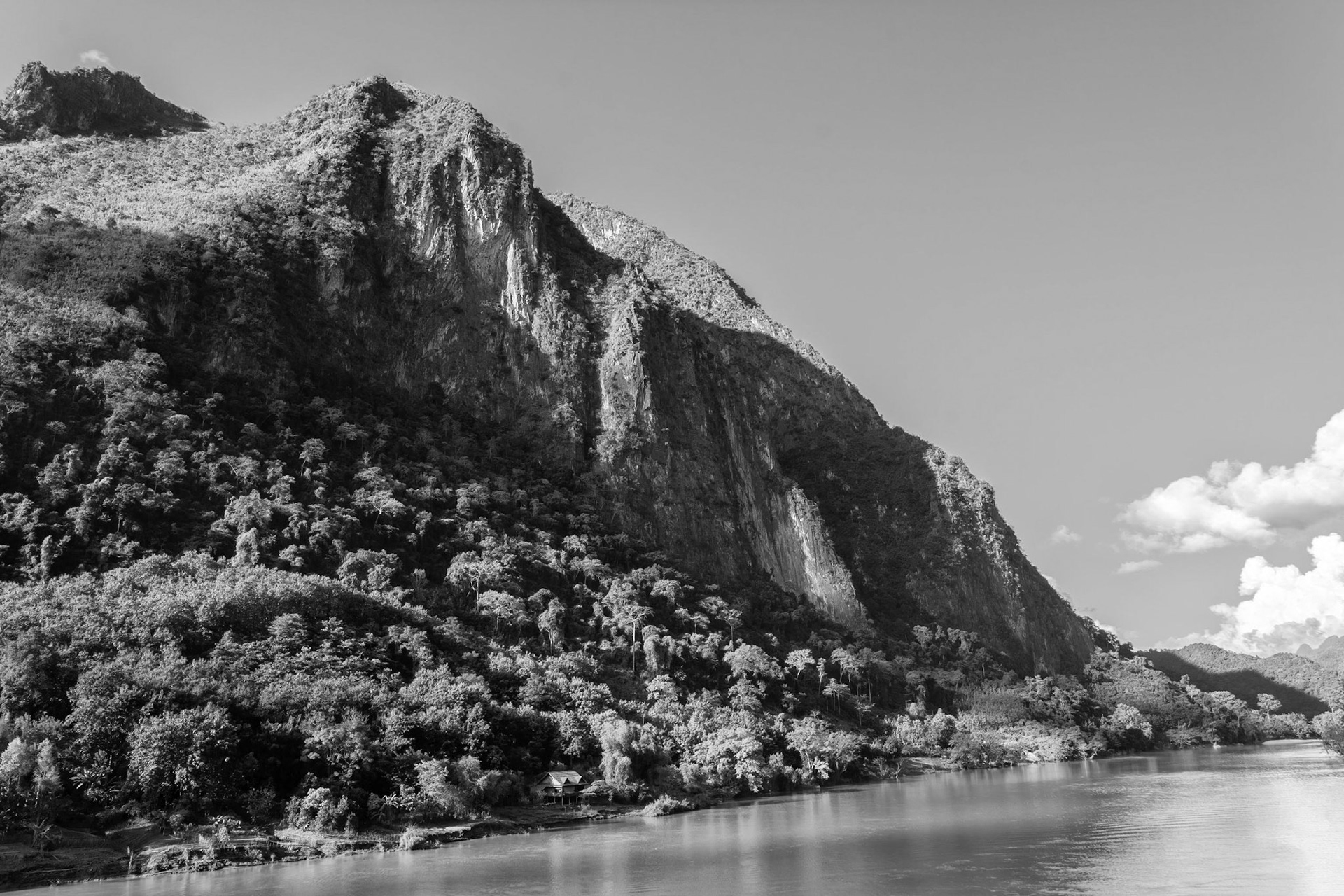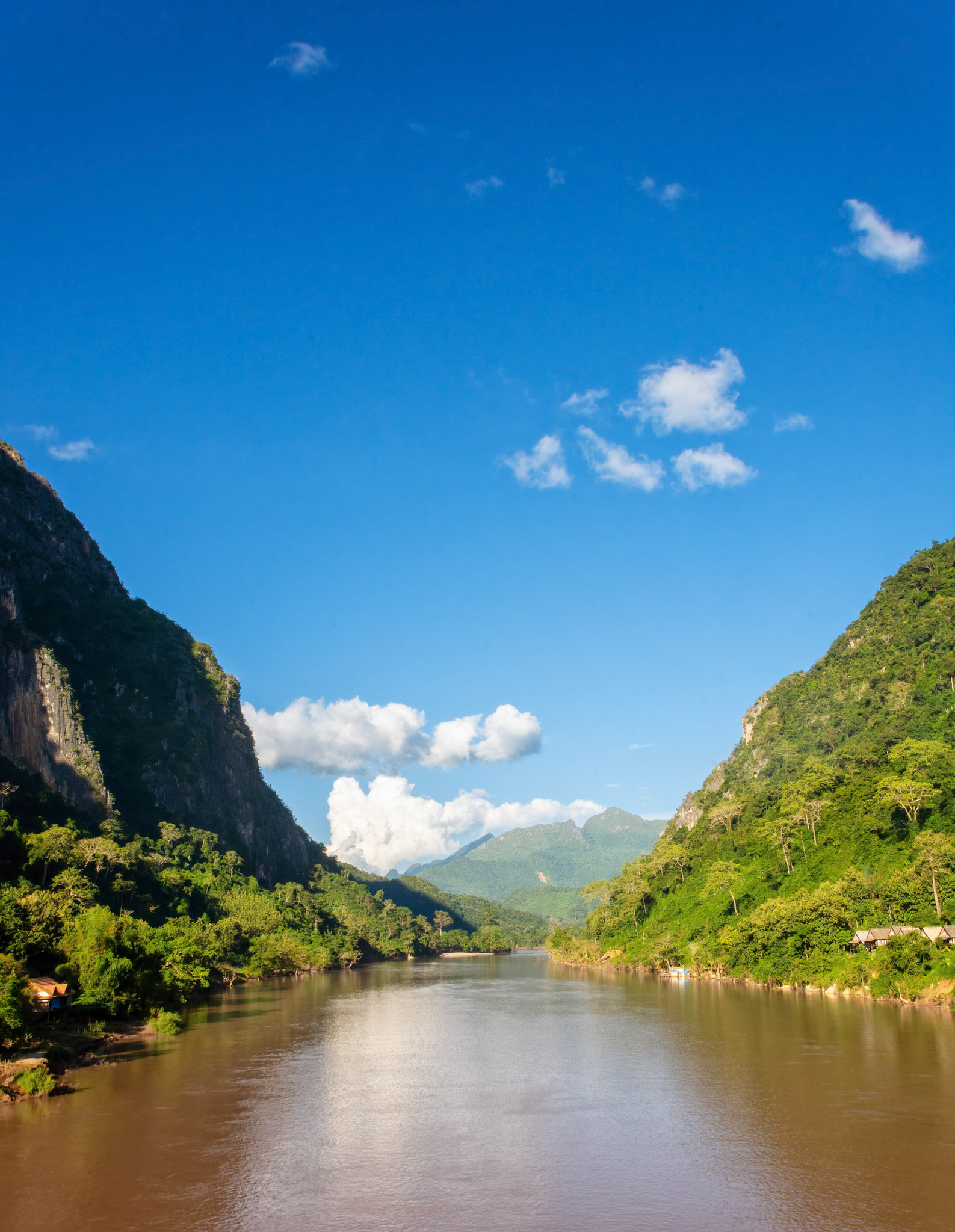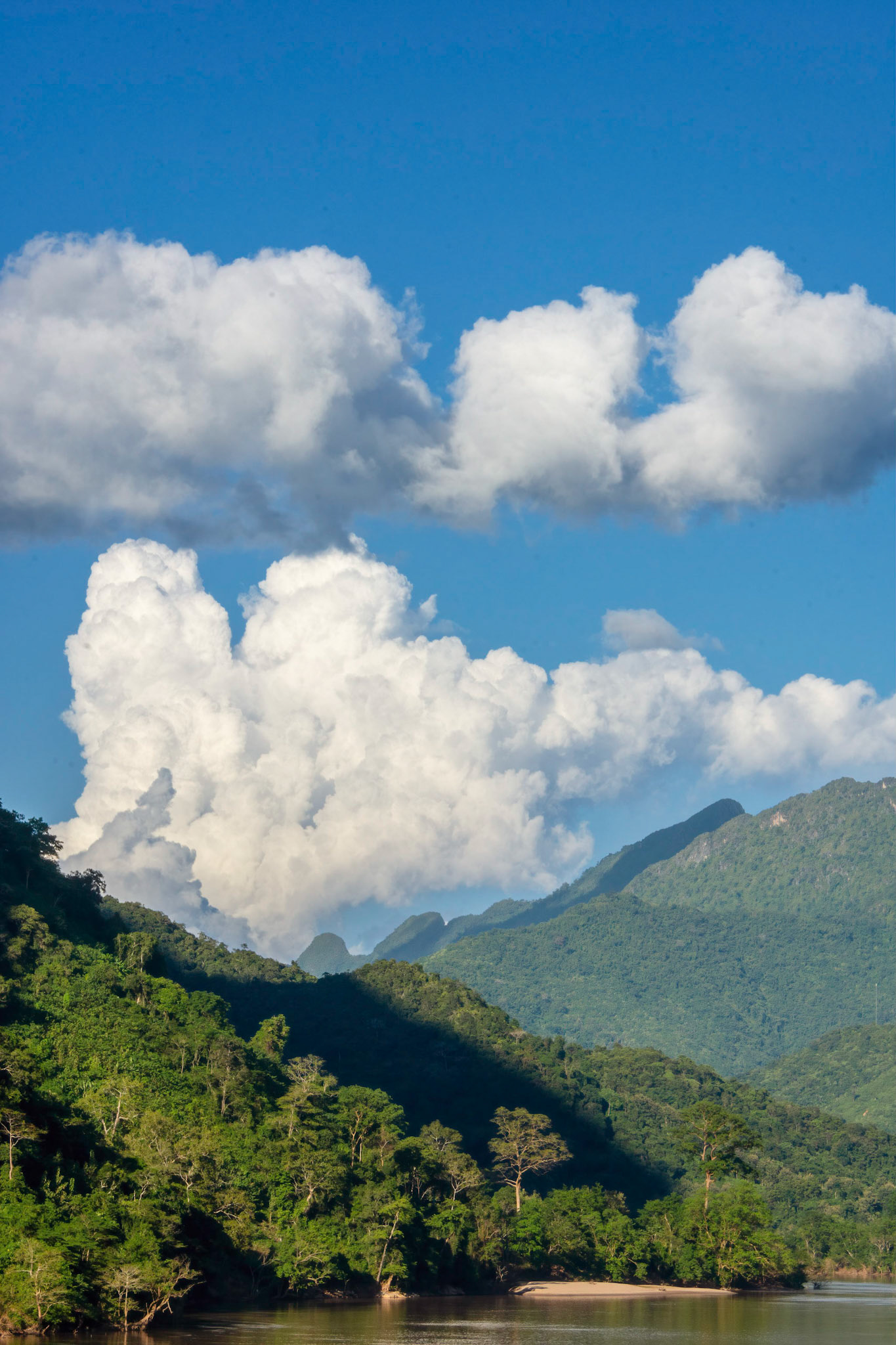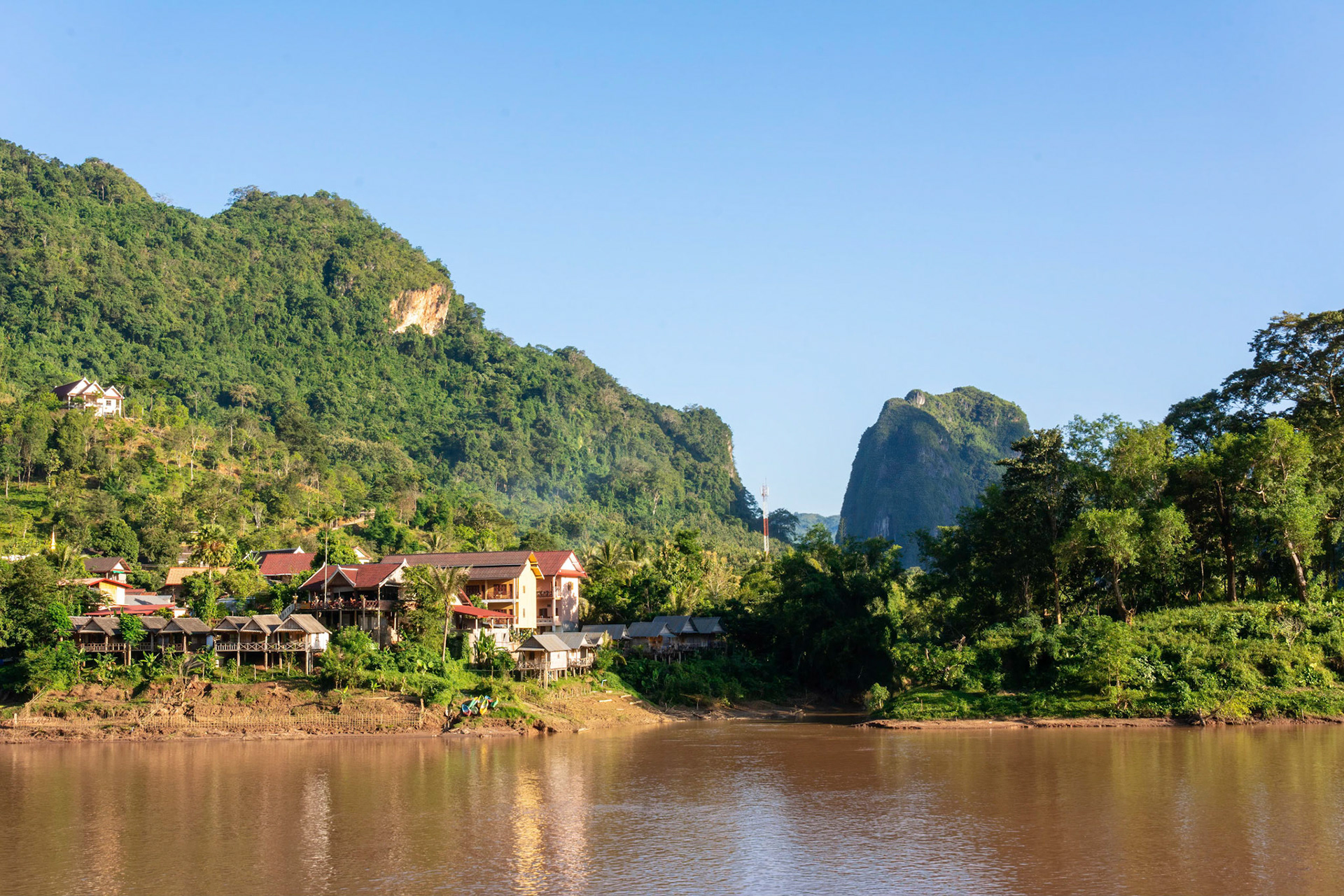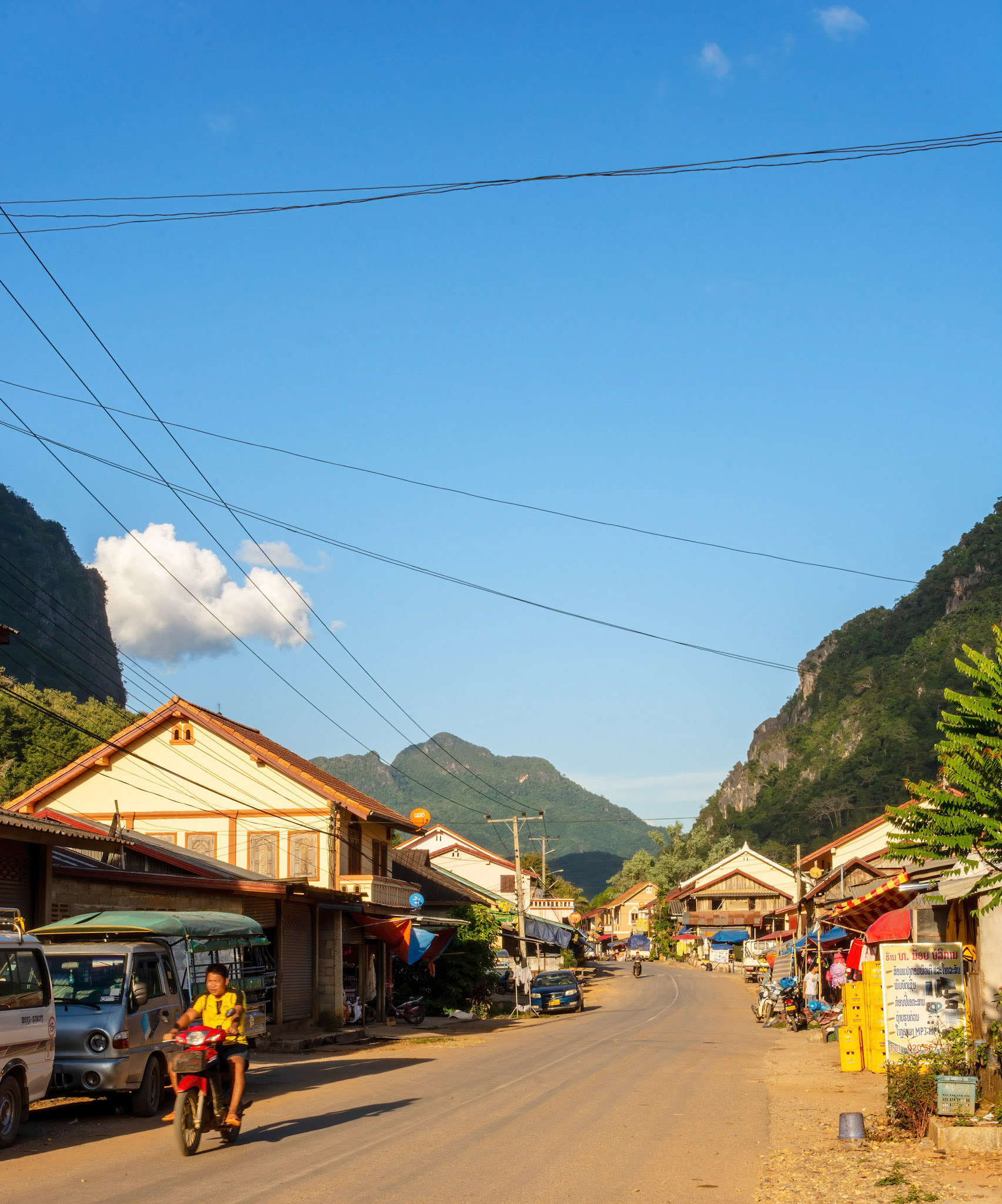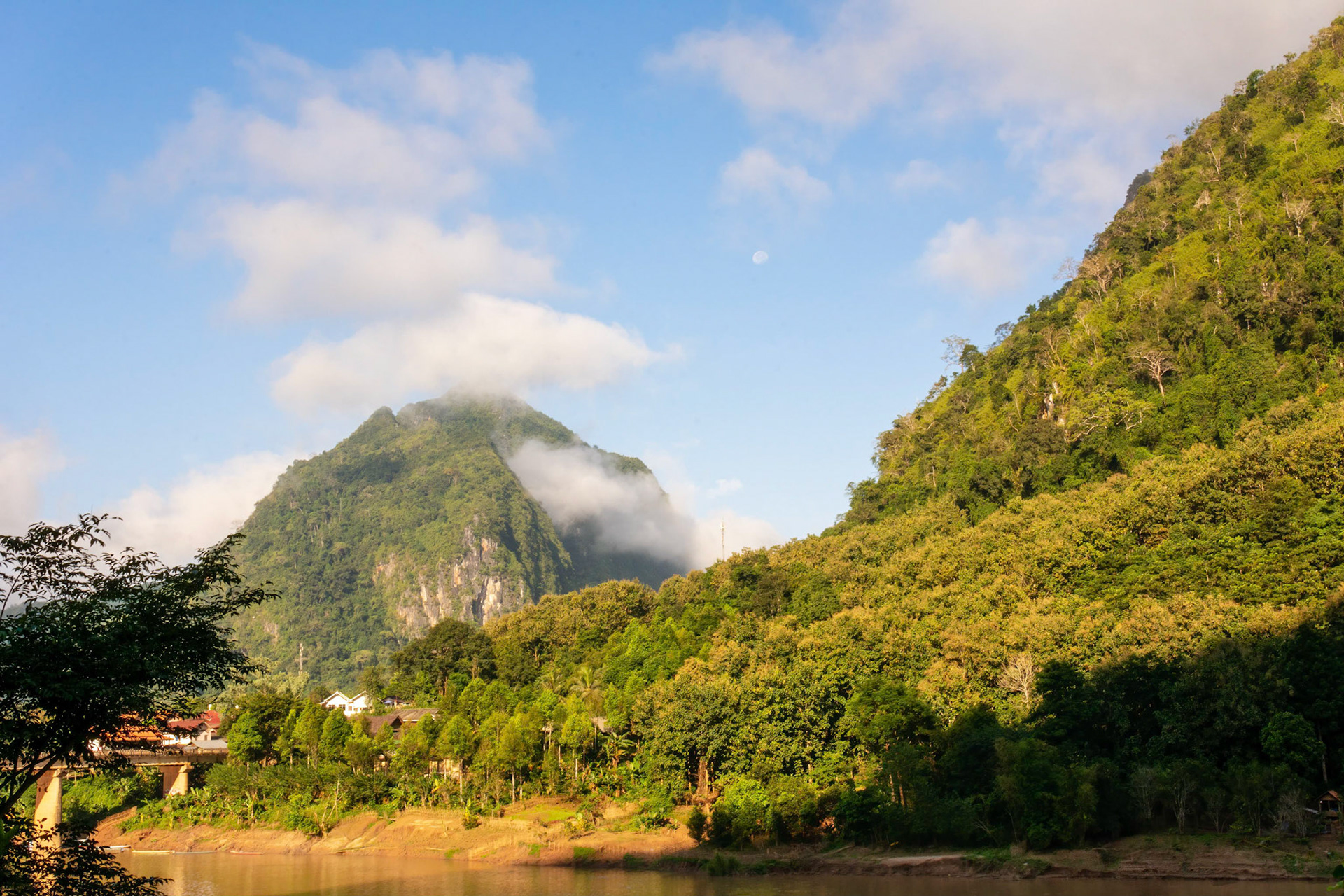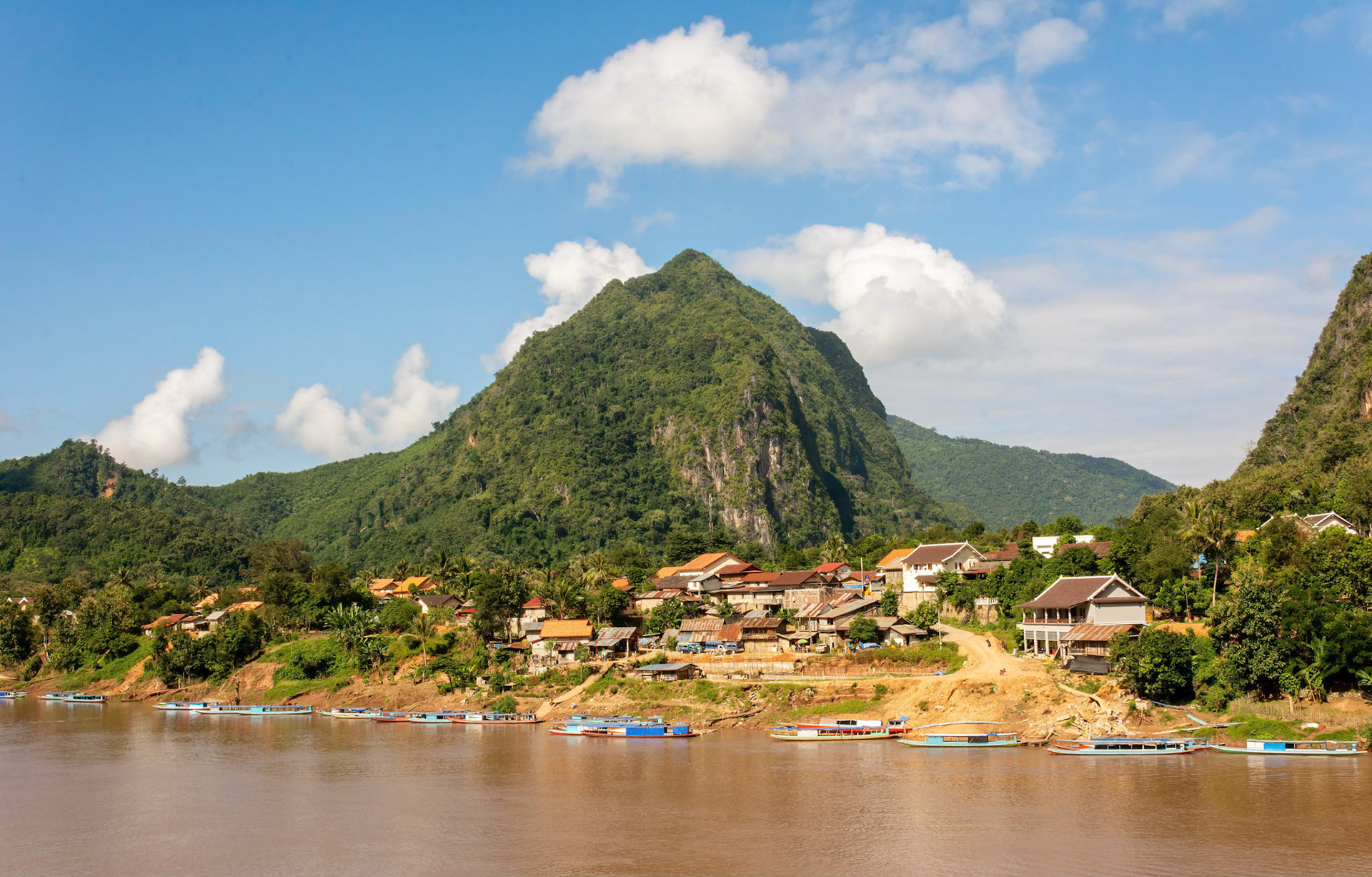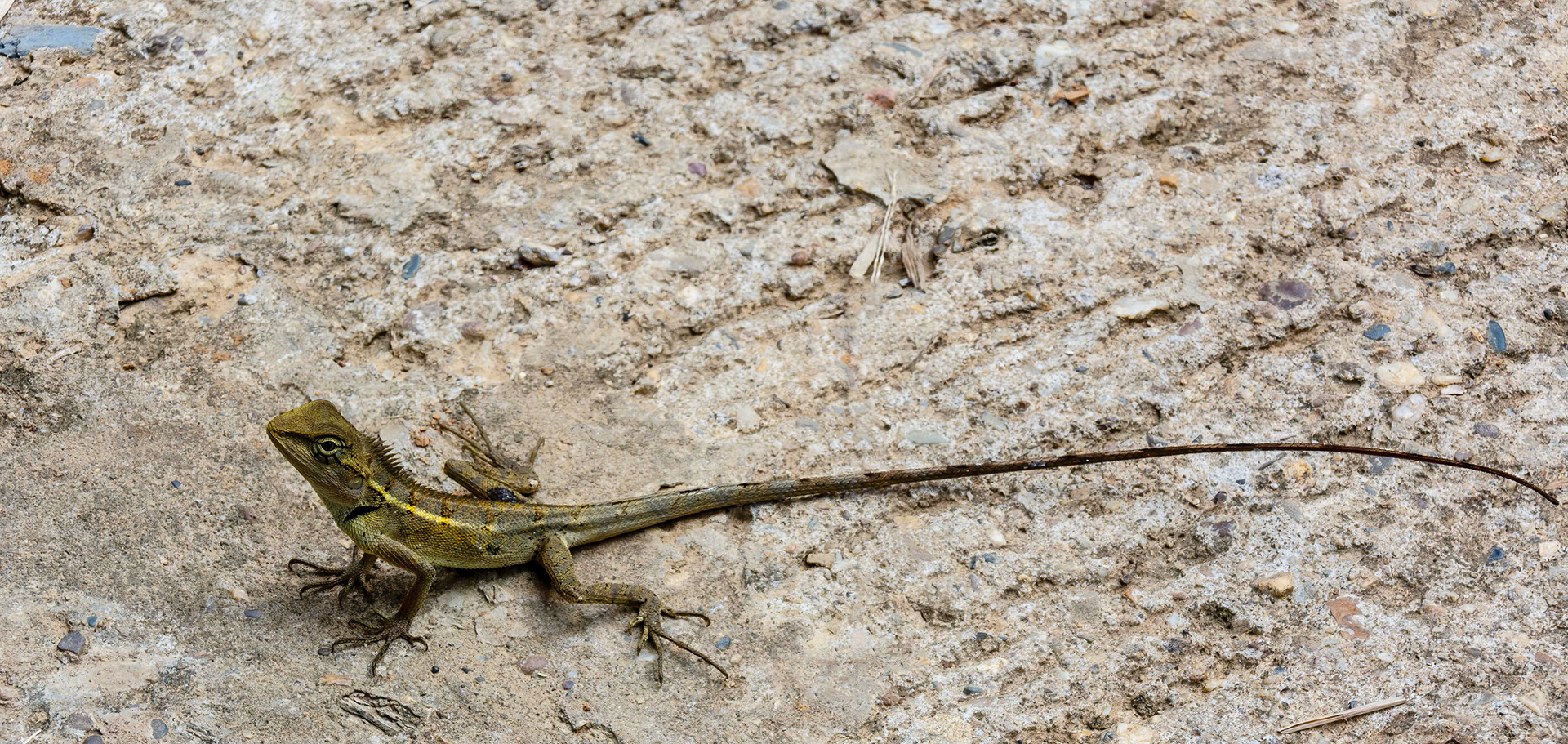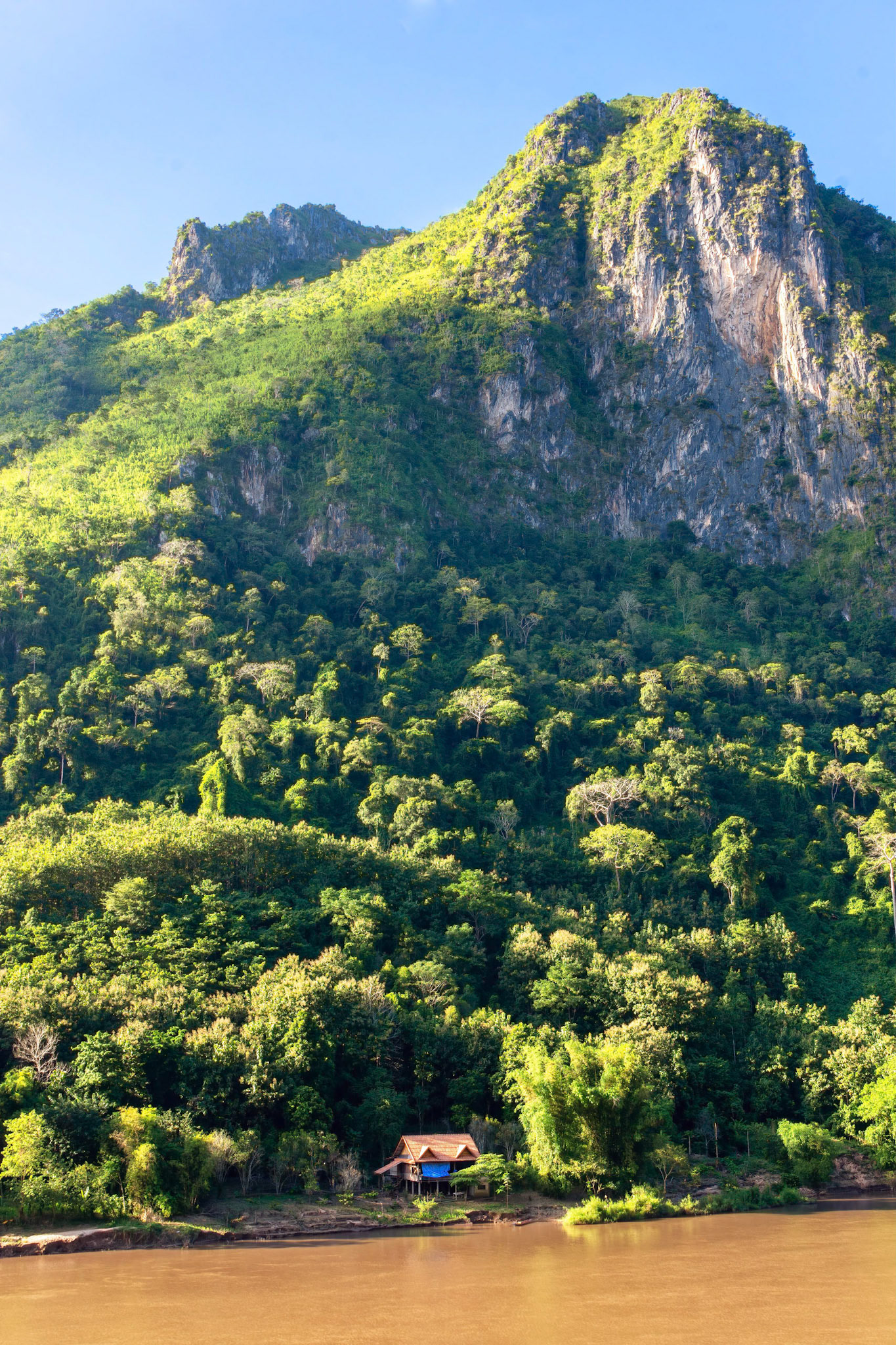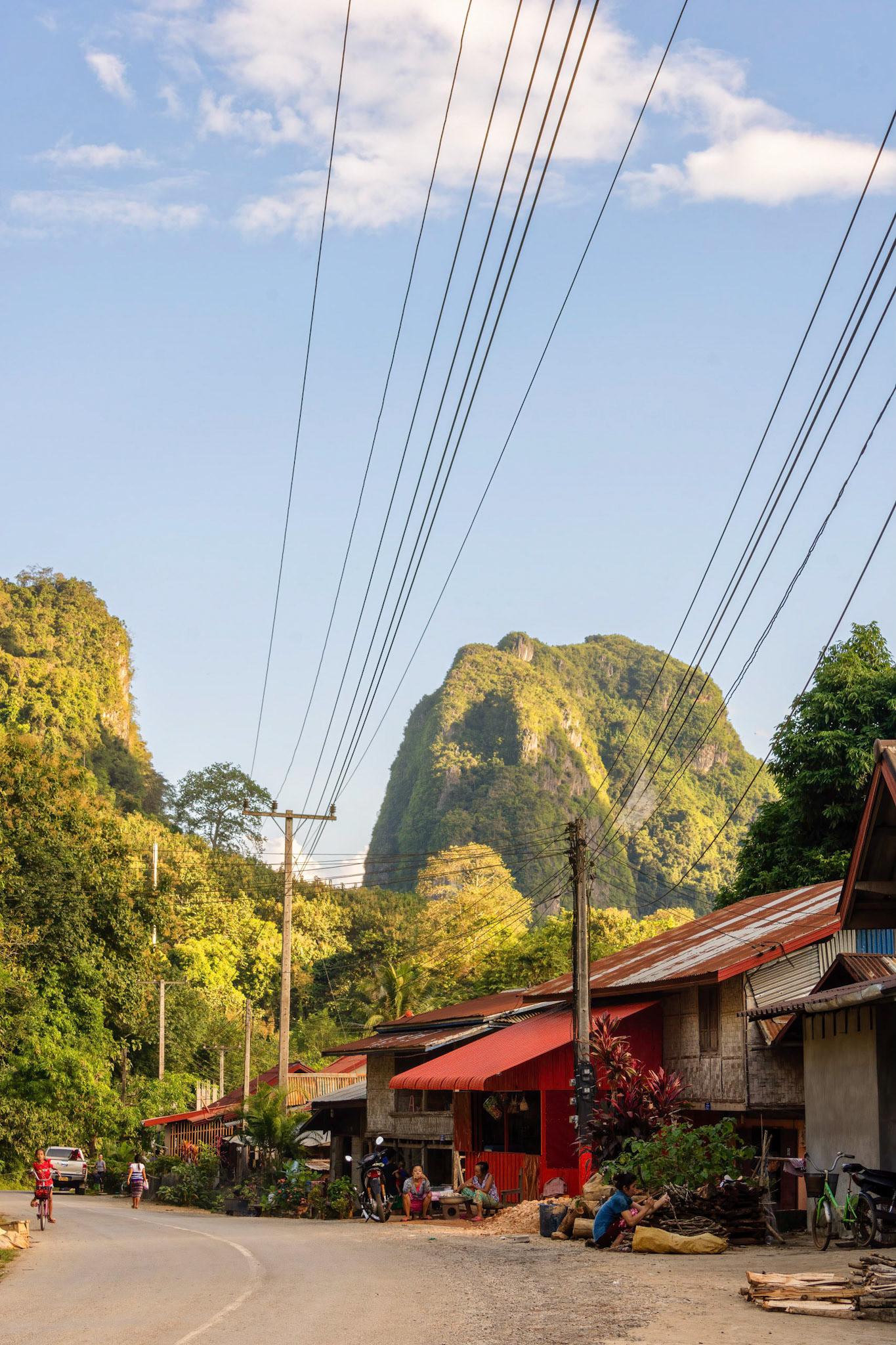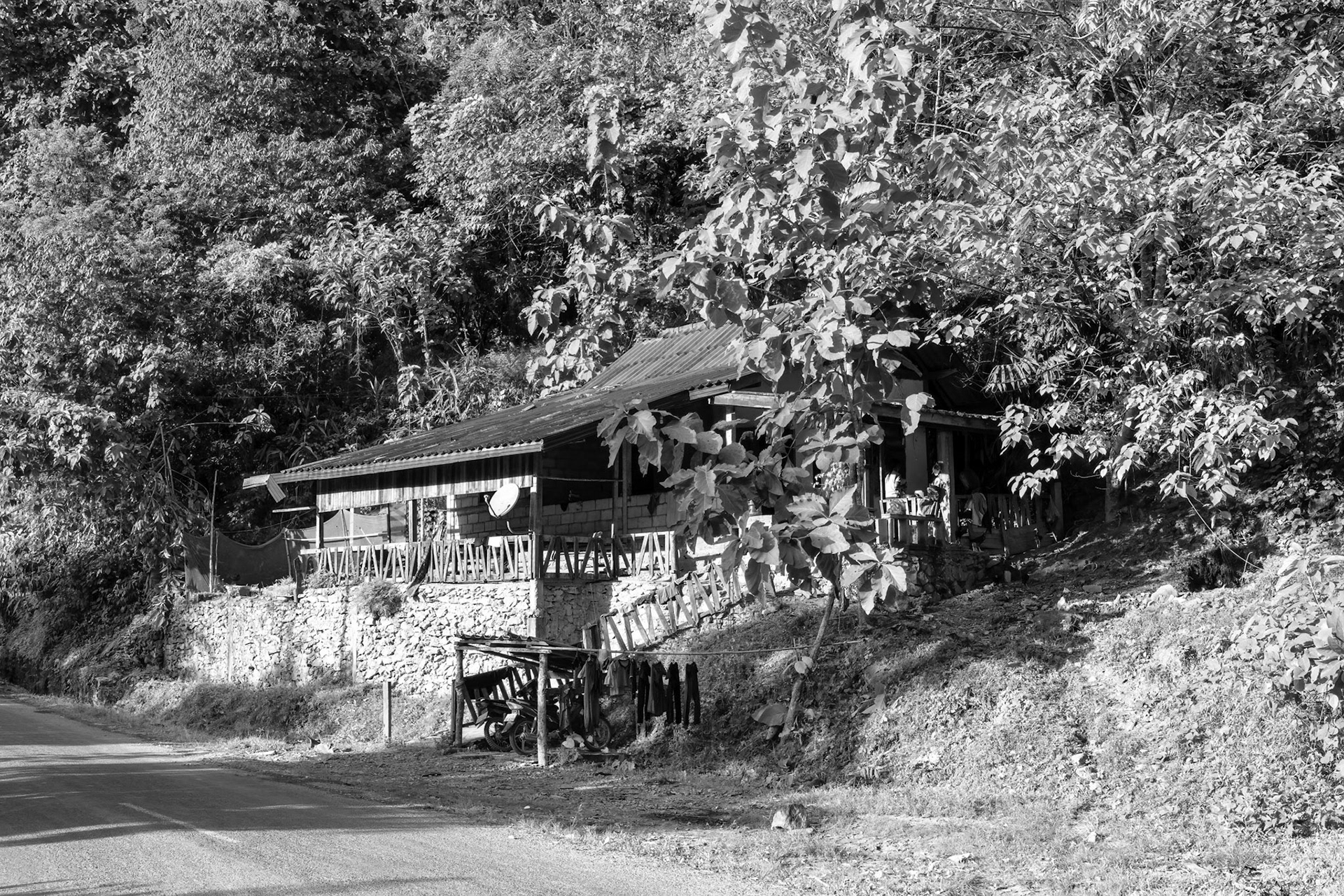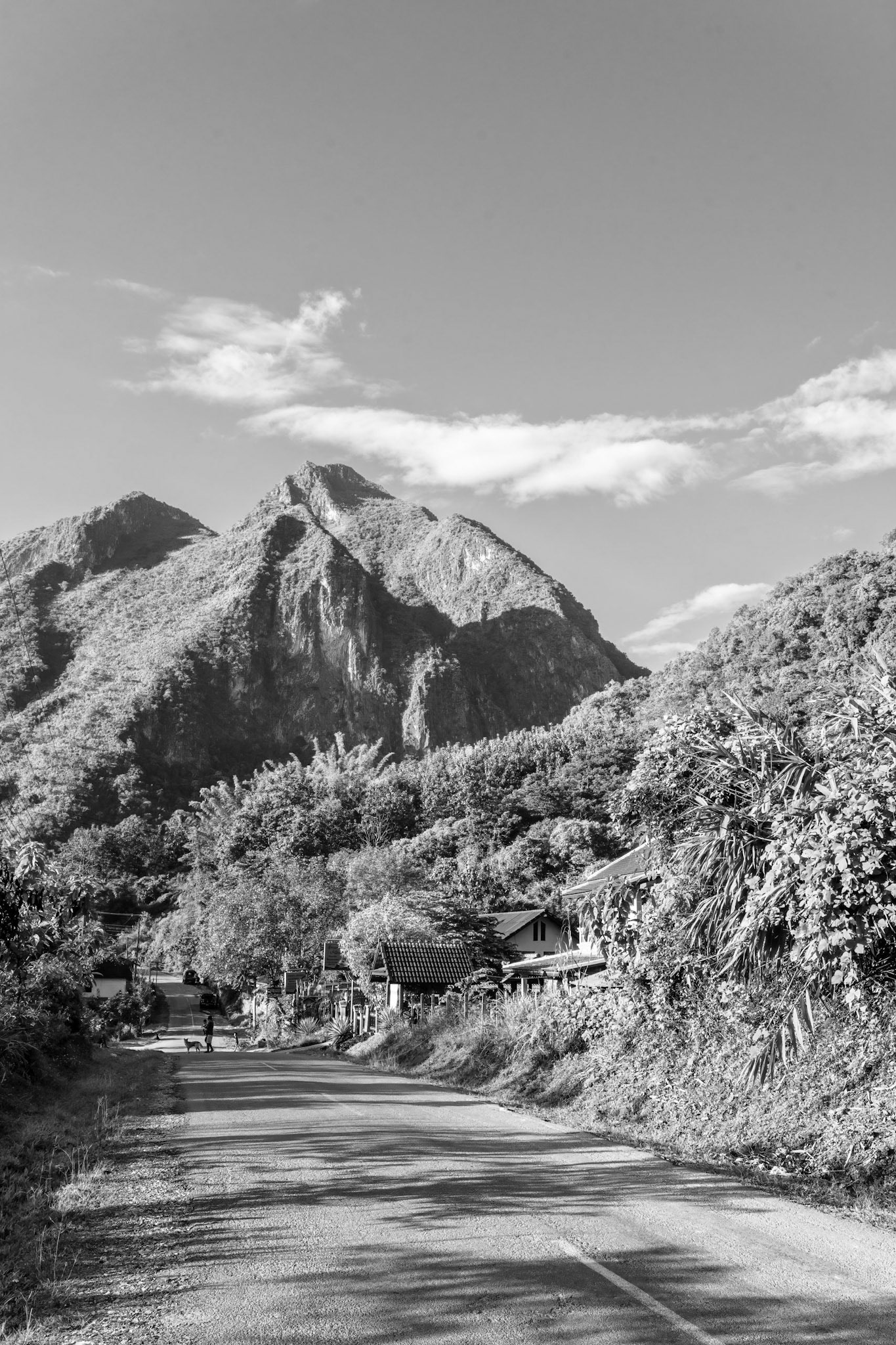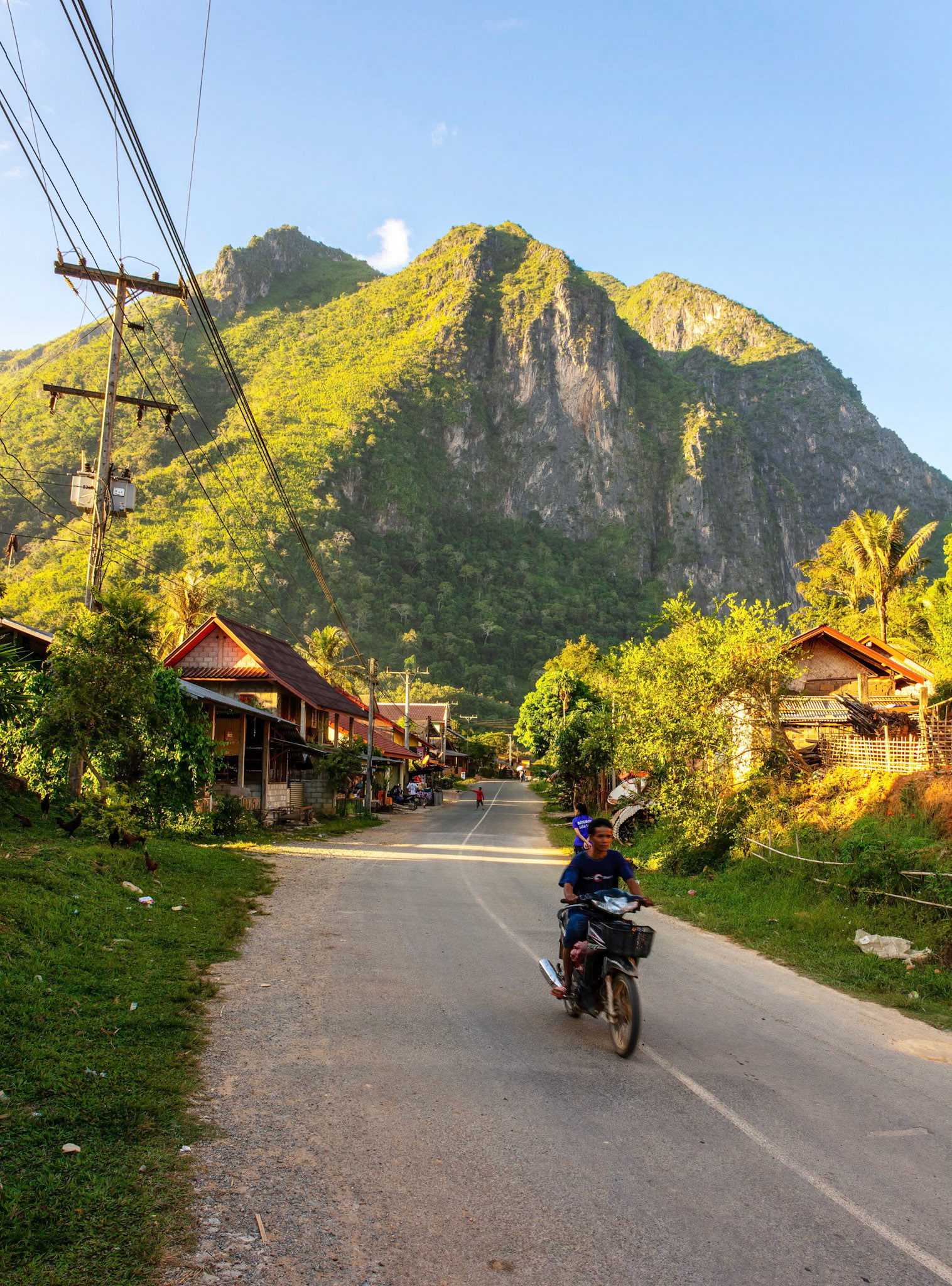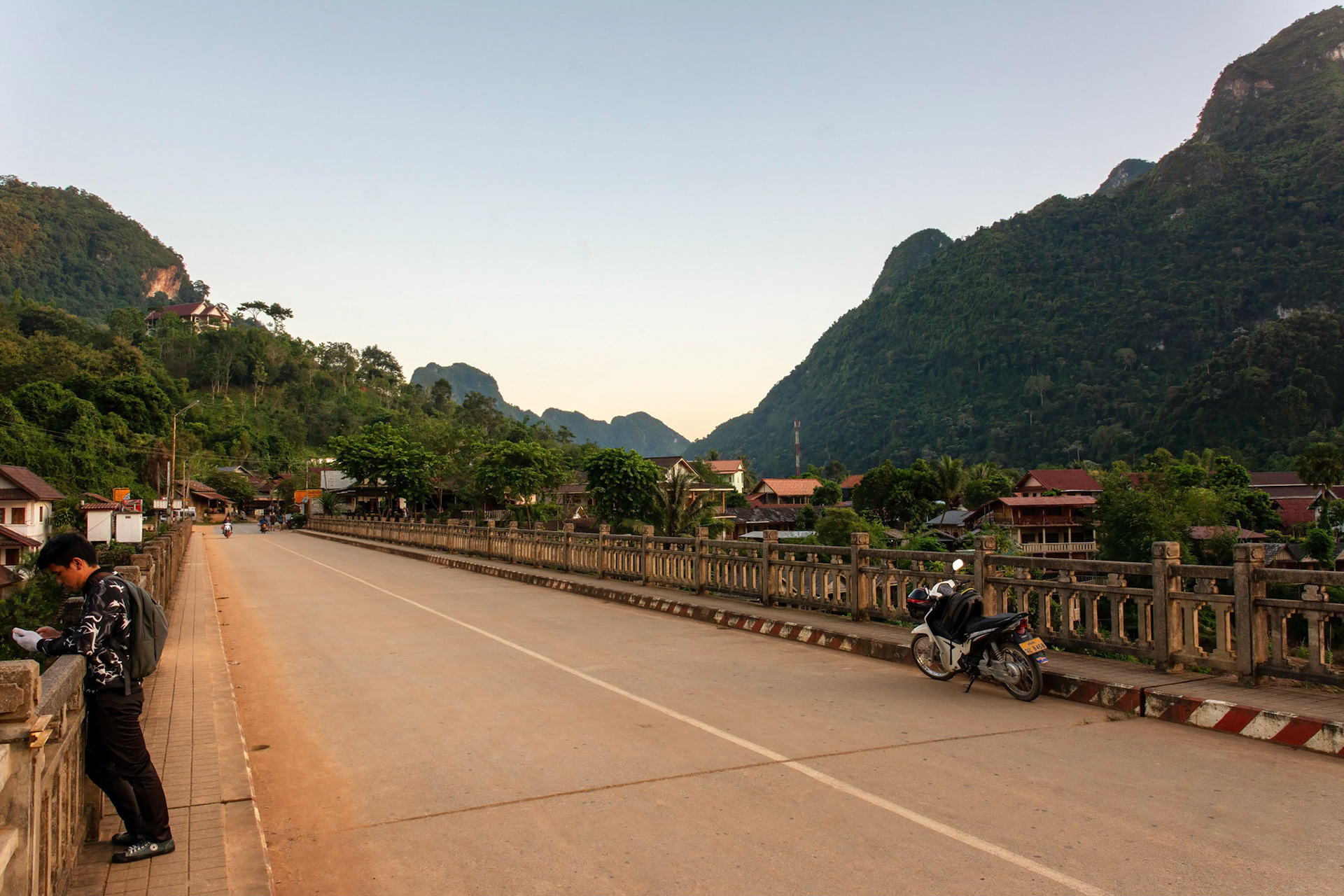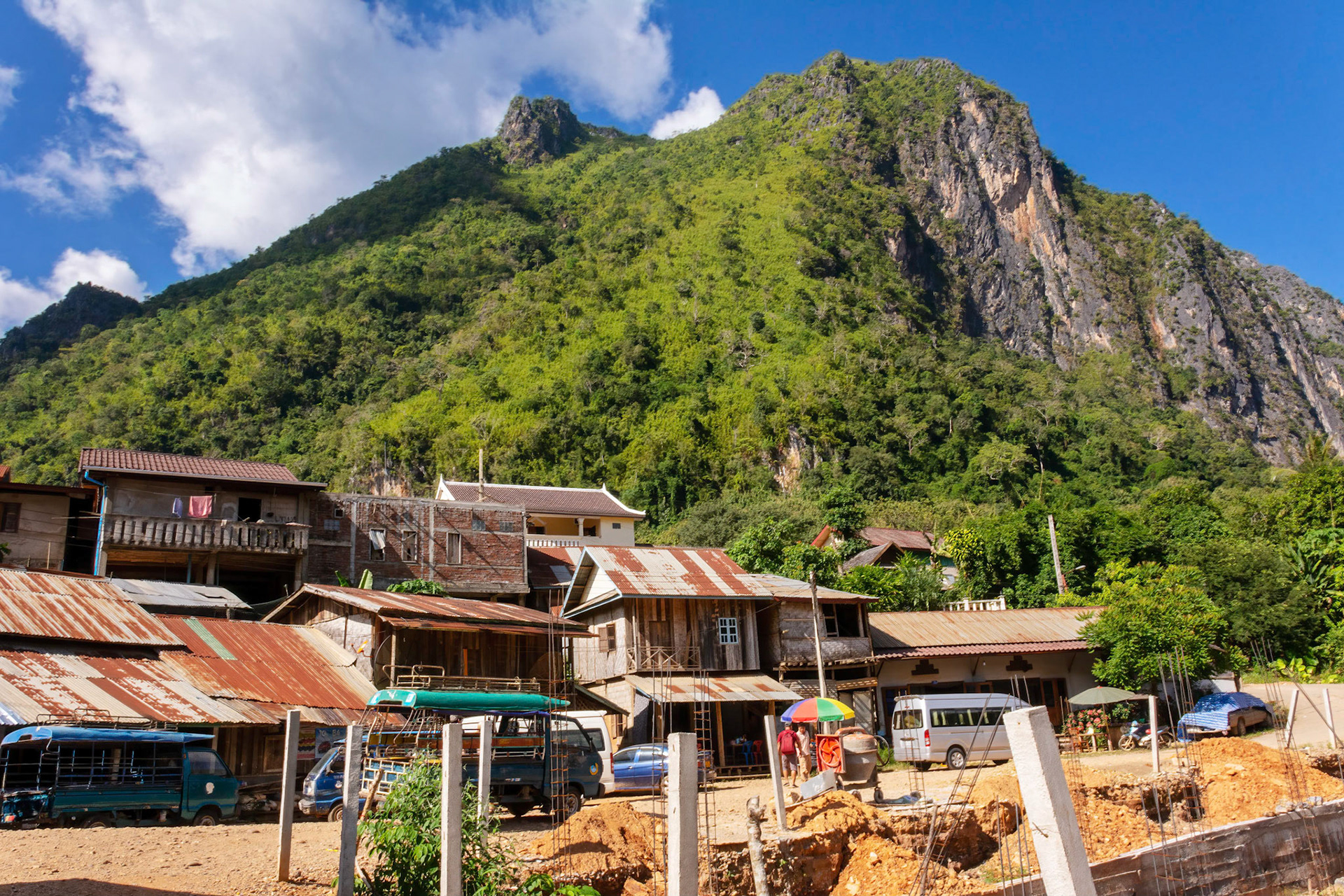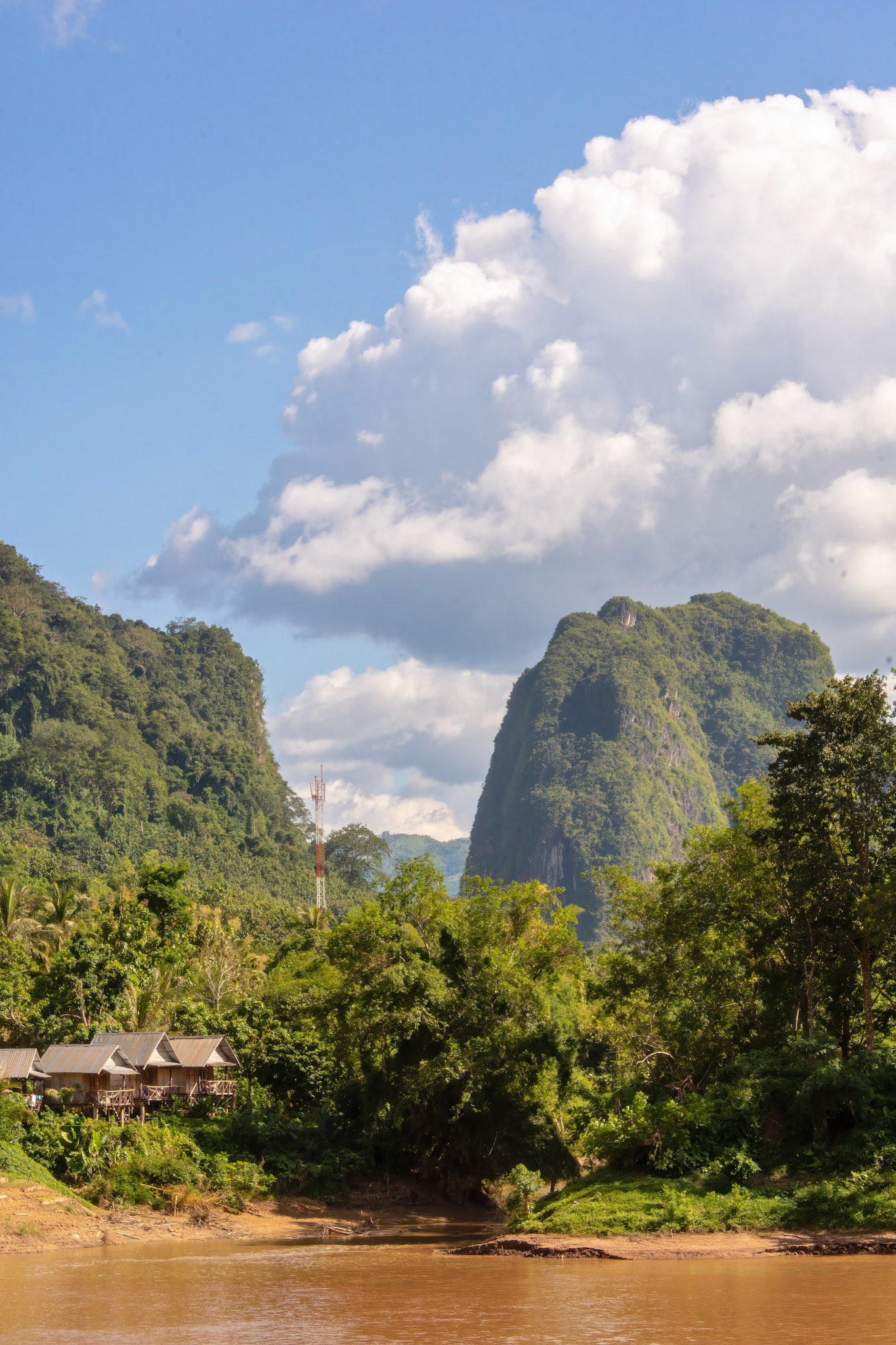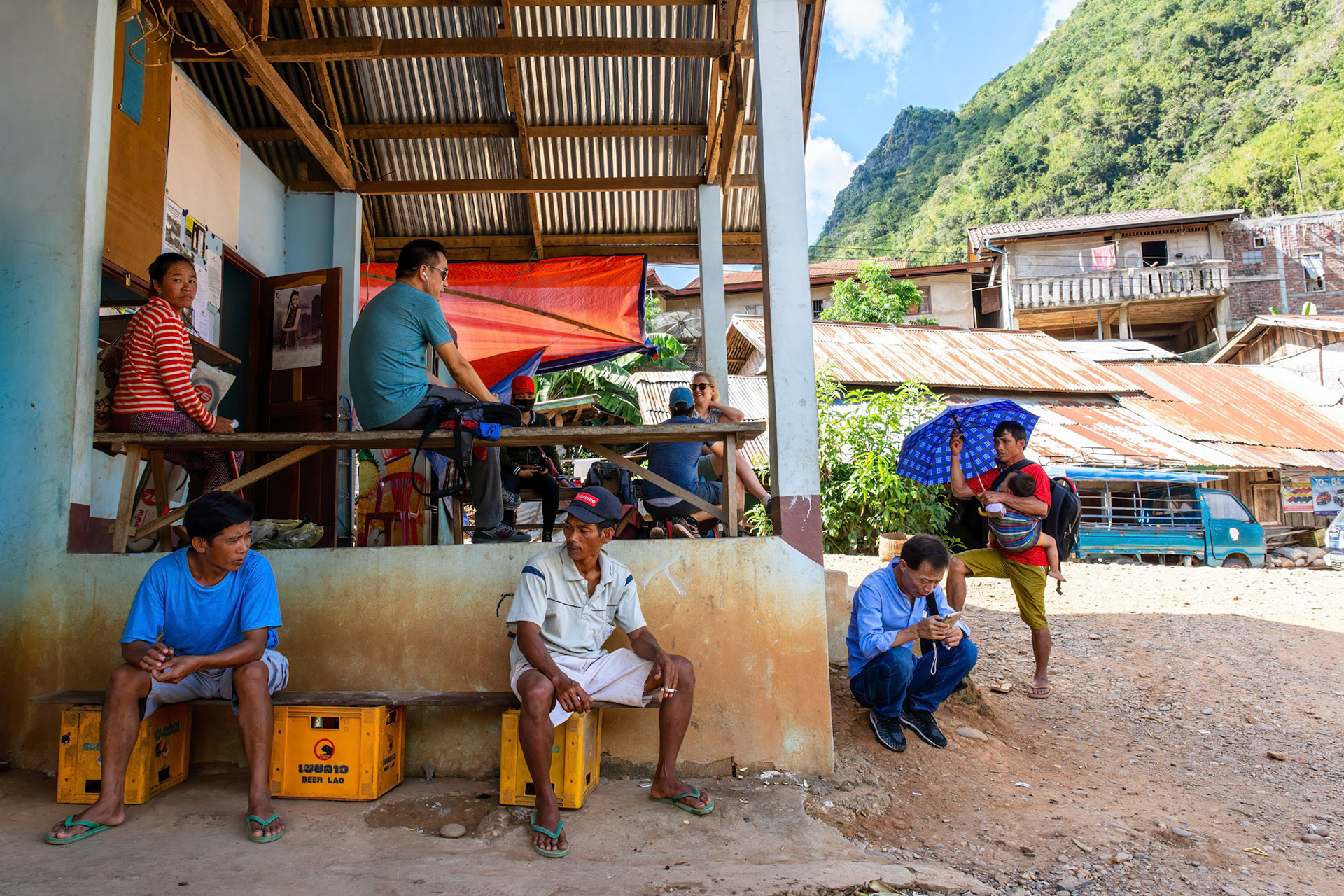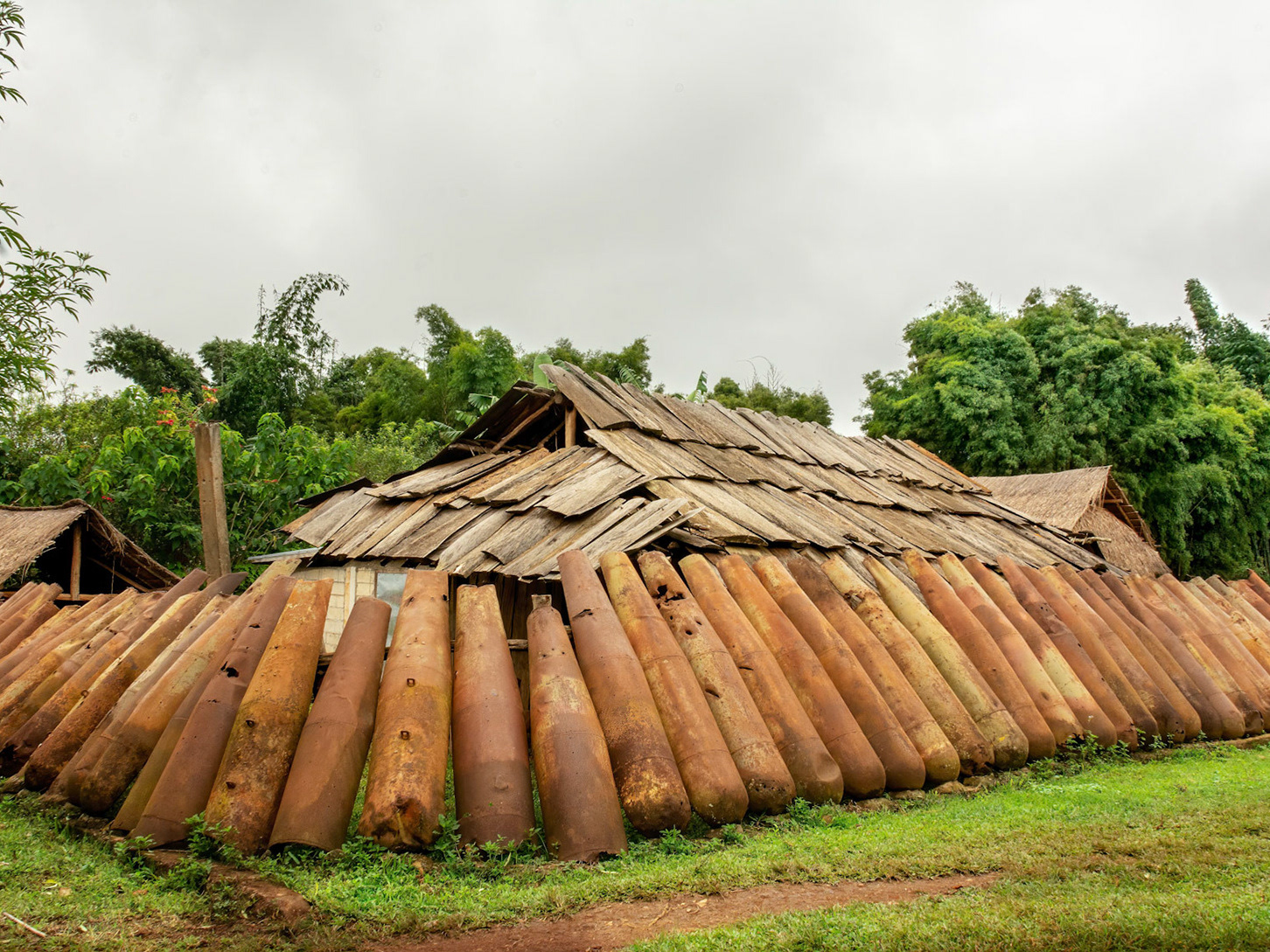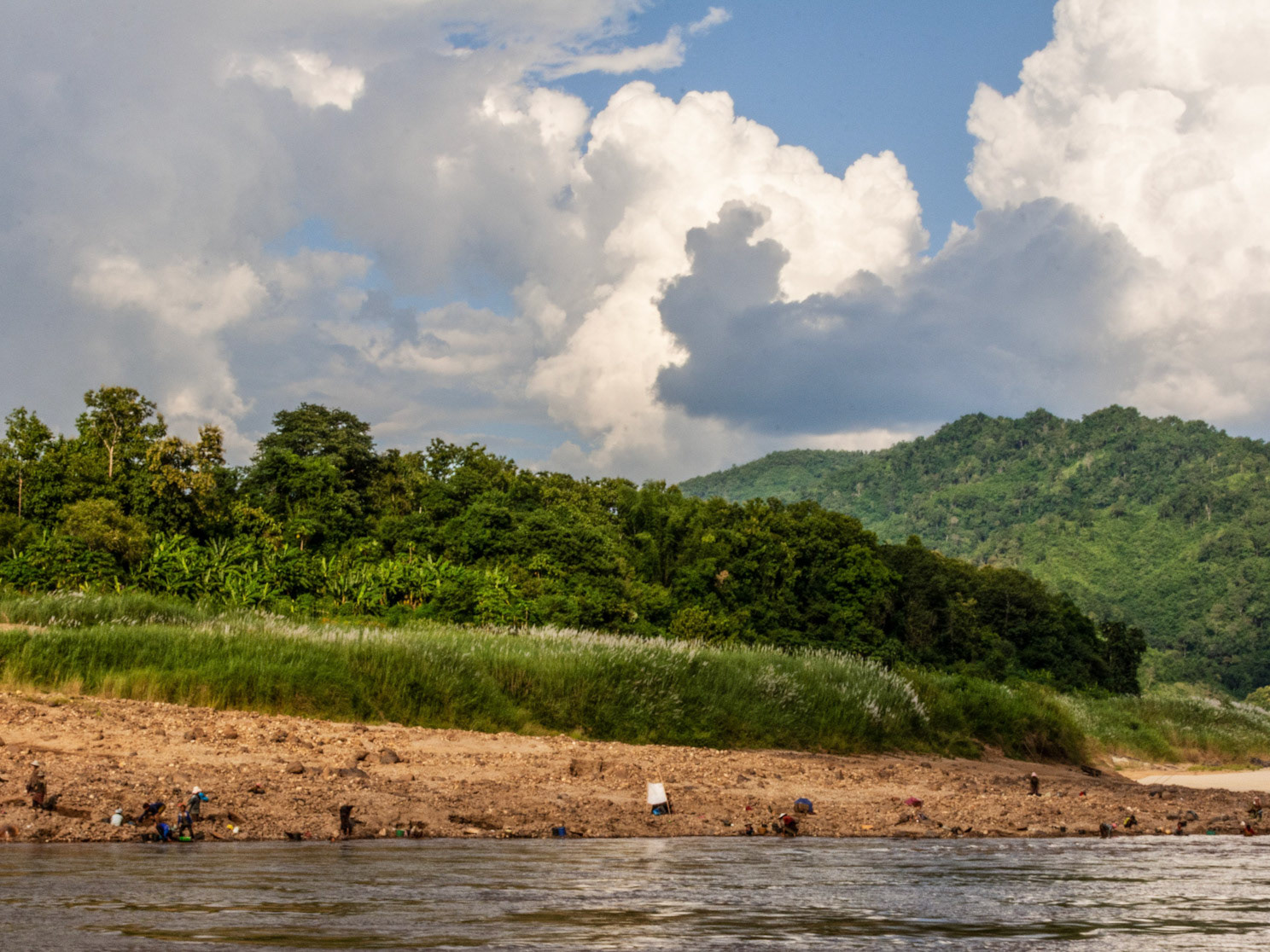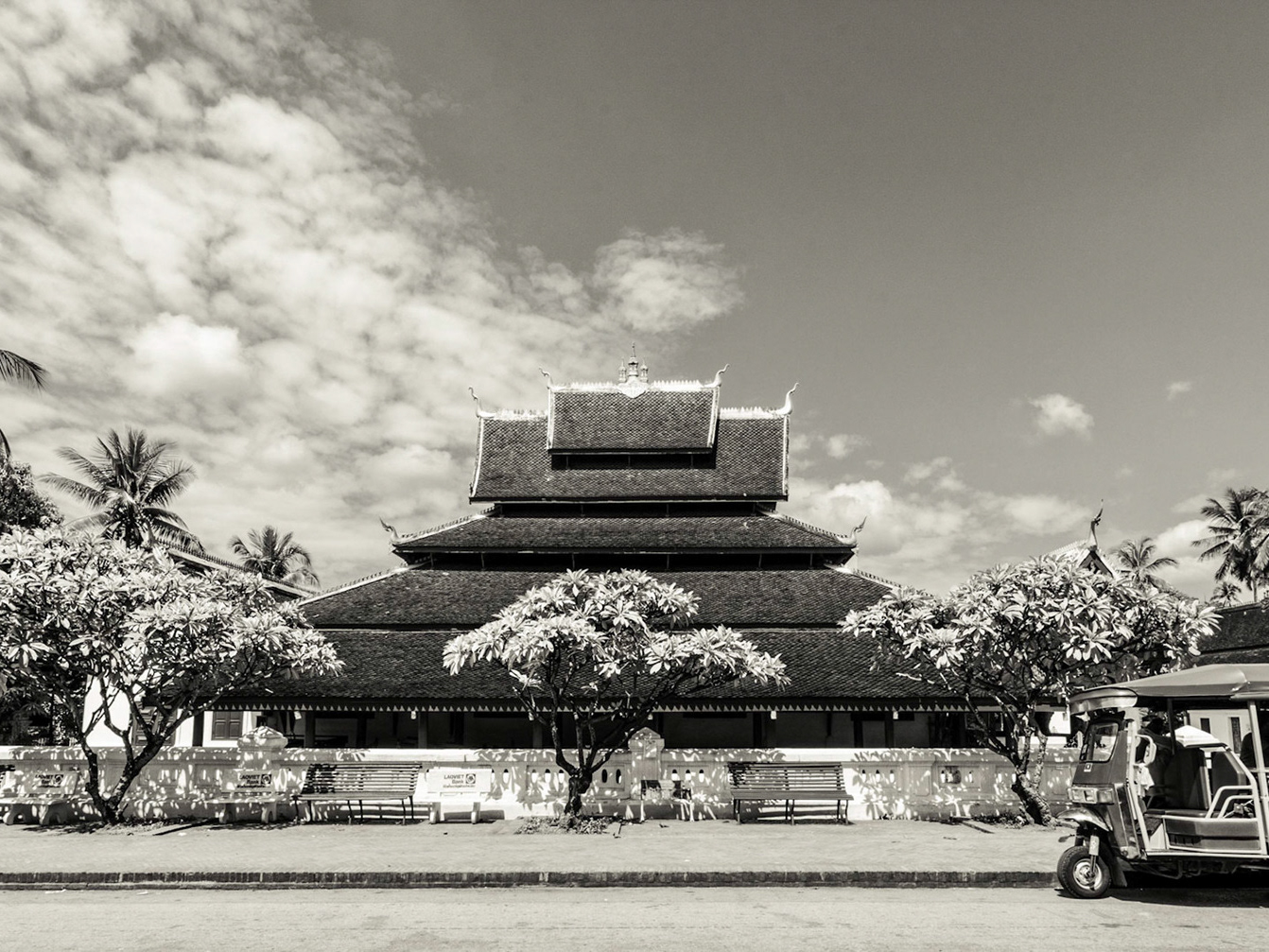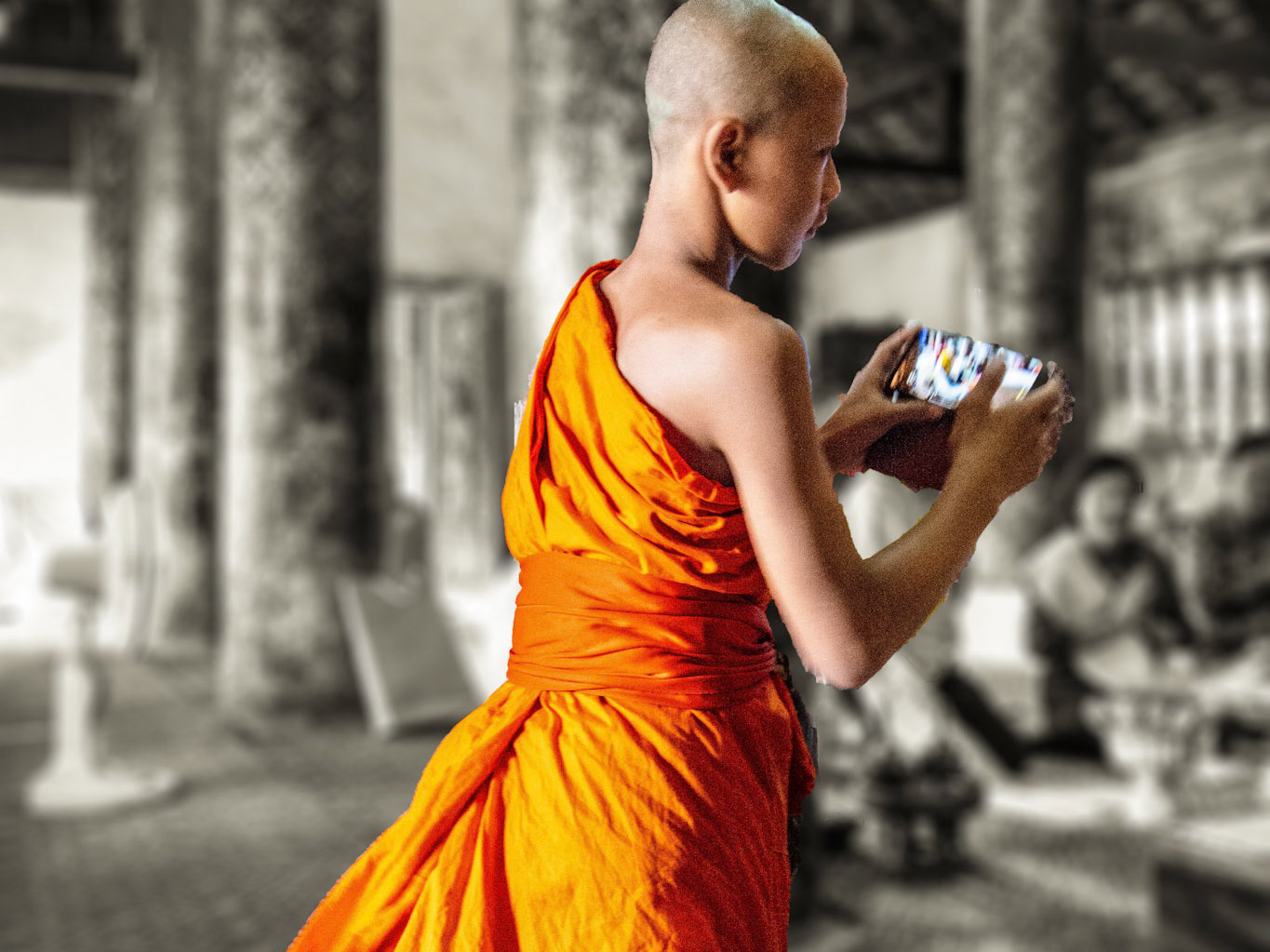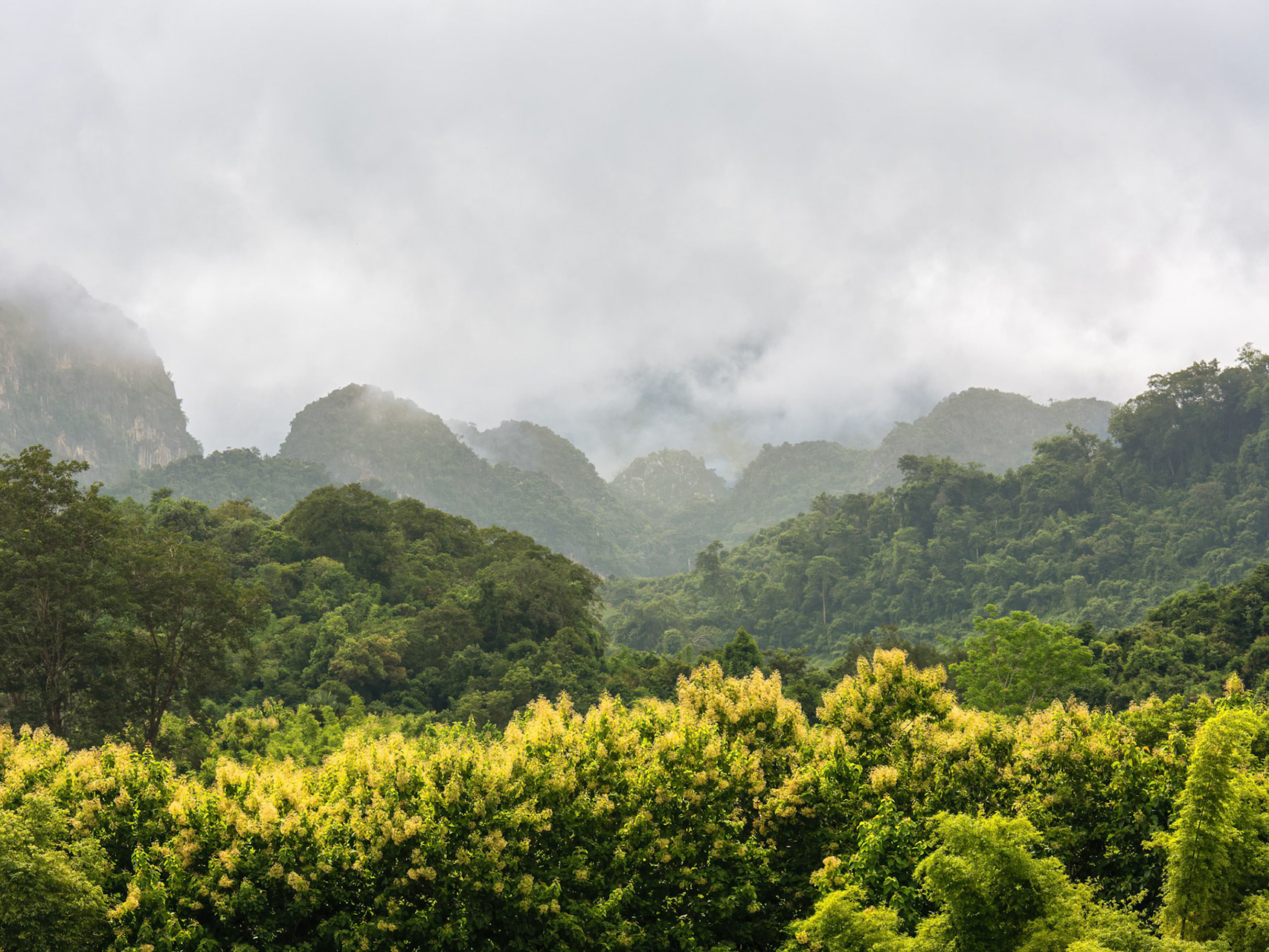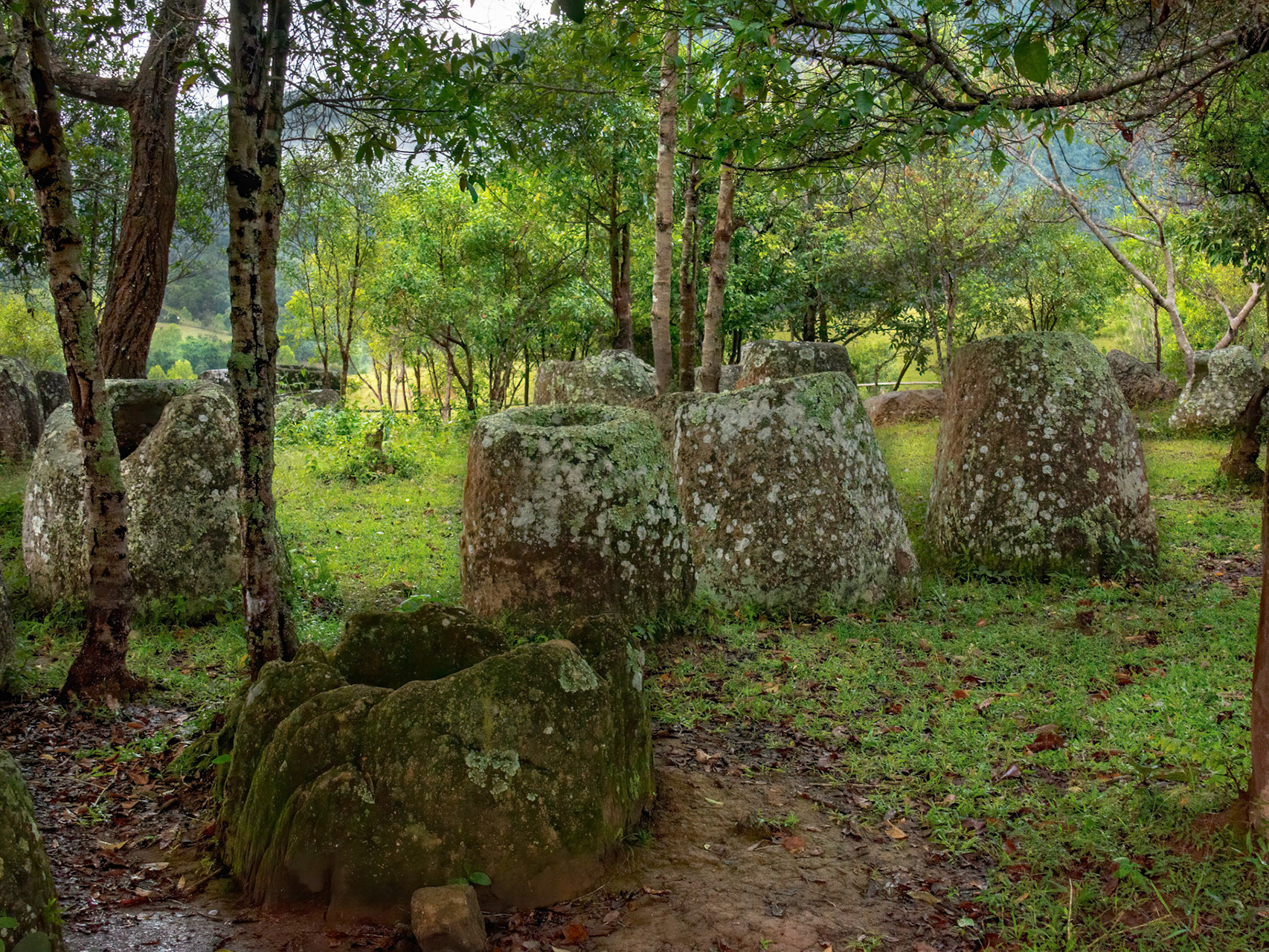I had to go by bus from Luang Prabang to Nong Khiaw because even though previously the trip could be done by boat up the Nam Ou - ນ້ຳອູ (Ou River)- which literally translates to "Rice Bowl River", now there are several dams are under construction closing off navigation. The bus picked me up and continued on a round of guest houses until it was pretty close to full before we headed, almost due north, out of town. Travelling over mostly good but narrow roads, although in a couple of places we had to dodge a couple of landslides and road works, squeeze past huge trucks in others and multiple groups of bike riders undergoing some type of challenge. The road traverses some spectacular limestone country and runs parallel to the river for about two thirds of the trip until Pak Nga; where we headed up into the hills.
Closer to Nong Khiaw we descend and then negotiated several places where subsidence had severely undercut the road, and of course there was a steep upwards incline on one side matched by an equally steep decline on the other- dropping straight into the river- giving little space for manoeuvre. Some people got off the bus at the badly mis-named Nong Khiaw bus station, more of a small patch by the road, before it continued over the bridge and dropped me off on the other side of the river at the foot of the driveway leading to my guest house.
I went for a bit of a walk around in the afternoon, quite enjoying myself until I wanted a drink, reached for my wallet and discovered it was missing. Yup, I lost my wallet containing Lao Kip but more importantly my credit and debit cards; and I had lost it, it hadn't been stolen- no one was ever close enough to me to be able to lift it. Nothing found, when I retraced my steps, nor in my last hope- my room. It was just gone and now I had to figure out what to do. It was, of course, a Saturday and I was due to go to the more remoter Muang Ngoi on the Monday.
Still trying to figure out what to do about the missing wallet my first port of call, with the hope that the wallet may have been handed in, was the local police station where I was lucky to come across an incredibly helpful local policeman. My details were taken down and then the policeman gave me ride down to the lady who does announcements on the town PA system. I had told them I didn't care about the cash, but if I could get my wallet back it'd save me a lot of bother. Several announcements were made but no wallet, fortunately I had some Thai Bhat and US dollars in my suitcase which give me breathing space.
In the afternoon I walked along the road for a while up to a spot where there was a sign reading "Nice Swimming". On the way back I passed a monk burning a pile of leaves outside his temple while enjoying a not very monkish cigarette, shades of a Sunday afternoon on the north shore in the 60s.
I had blocked my cards and figured out, since I knew my card number, expiry and CCV I could send myself money via Western Union; unblocked card and did the transfer, no problem; then I went to the post office to find it closed and unlikely to open. It turned out I'd have to go to Nam Bak, about 21k down the road, to pick up the money, fortunately a car and driver was available to take me there. After I picked up the money, back to Nong Khiaw, pack up and get ready to catch the public boat to Muang Ngoi. I was told the boat would be leaving at around 14:00, and made sure I was there in plenty of time; of course 14:00 turned into about 15:30, best to settle down- enjoy the view, take a few photos and when too hot settle down with a book.
Finally the boat arrived and we all started boarding, although that fails to describe the experience: the boat is about 10 metres or so long and has a beam of about 1.5 metres, with a timber canopy about 1.5 metres above the gunwales which were only just above the water. A group of monks boarded first, up towards the bow, and then us hoi polloi, who had to crouch down and clamber under the roof- interesting. As I contorted my head under the canopy, wishing I'd retained my former agility, I discovered the seating was two narrow boards, about 14cm wide, running along each side of the cabin. In order to maintain stability we had to each move to alternating sides of the boat as we crept aboard. Fortunately I was able to get a spot in the centre and away from the noisy smoky engine, and even better the space opposite was vacant so I could stretch out my legs a bit rather than sitting knee to cramped knee with the person opposite.
It wasn't possible to take photos on the way upriver, despite having my camera bag resting under my legs but because of the seating configuration I couldn't really see much of the landscape for the roughly 20 km, which took just over an hour, up stream. It wasn't until I emerged from the boat and onto the plastic pontoon that I could really take in the spectacular karsts ringing the town. And then, to get to the guest house, I had to lug my suitcase up a high and steep staircase, luckily not far. Just about every building in town is recent because Muang Ngoi, the former main district node, was flattened by a succession of airstikes during the Second South East Asian War. Electricity is a recent modernisation, it only arrived in 2013, along with a rudimentary road/track that so far hasn't made it onto Google Maps and it has only very recently acquired an ATM. The town runs along a single street about 700 metres long from Vat Okad at the northern end to a tall sheer karst hill, almost 100 metres straight up, at the southern end.
